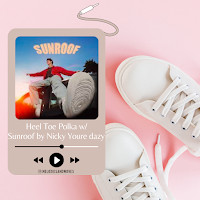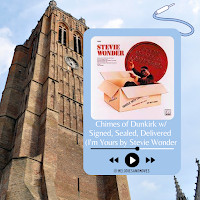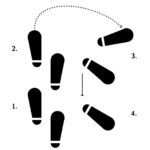Many educators strive to bridge the gap between classroom learning and students’ everyday lives. One teacher, Melissa Fuller Flores, discovered a powerful way to do this in her dance classes by responding to a simple yet profound question from a student: “Why is the music we hear in music class so different from what we listen to outside?” This question sparked a journey of innovation, leading her to blend the traditional world of folk dance with the vibrant energy of pop music, creating a dynamic and engaging learning experience. Inspired by the quote, “Be the teacher you needed when you were younger,” Melissa transformed her approach to teaching folk dance, making it more relatable and culturally relevant for her students.
Break it Down Now Y’all: Choosing Dances and Pop Songs
Selecting the right folk dances and pop songs is crucial for successful integration. Understanding your students’ abilities is the first step. For those new to folk dancing, Melissa recommends dances with consistent partners throughout. Adaptations can also simplify dances, maintaining the core movements while easing partner changes. It’s important to remember ethical considerations: dances of ritual origin should be respectfully excluded from classroom practice.
Knowing when to introduce pop music into the folk dance equation is key. Students should first develop a strong foundation in the folk dance itself. They should be comfortable with the steps and patterns to the point where verbal cues are minimal. This solid understanding allows them to be more adaptable and improvisational when the pop music element is added, as unexpected situations may arise.
Song selection is often guided by student interests. Melissa draws inspiration from songs students are already enjoying – hits from movies, YouTube trends, the Billboard Hot 100, and even Kidz Bop versions. Kidz Bop can be a great starting point, prompting a deeper dive into the original recordings to ensure classroom appropriateness. When considering student suggestions, especially for songs with potentially ambiguous lyrics, seeking input from older students in high school or college can provide valuable insight into any hidden meanings.
Tempo is another important factor. Songs with tempos similar to traditional folk dance music offer a smoother transition. However, diverging tempos can unlock exciting opportunities for student creativity and adaptation. The contrast can challenge students to think outside the box and find innovative ways to merge the two musical styles.
Having chosen a song and dance, the next step is determining compatibility. Checking for similar time signatures and musical forms* is essential. Melissa’s practical approach involves listening to the pop song while physically moving through the folk dance steps with her fingers, visualizing the alignment. She advises against this while driving, humorously recounting personal experience. Another helpful technique is to mute a YouTube video of the folk dance and play the chosen pop song alongside it to observe how they overlay.
It’s Tricky… Tr-tr-tr-tricky: Navigating Potential Challenges
Form* discrepancies can arise when pairing pop songs with folk dances. Song sections and lyrical phrases may not perfectly match the dance structure, sometimes differing by 8 or 16 beats. When this happens, repeating sections of the folk dance to align with the song’s form becomes a useful adaptation.
Introductions in pop songs often require a slight adjustment. Melissa typically waits for the first verse to begin dancing. This allows students to grasp the song’s tempo and feel, and also to simply enjoy the music before the dance commences.
Bridges in songs can also present a unique opportunity. Leading into a bridge, Melissa calls out, “Make it up!” signaling an improvisation section. Students can pause, create freestyle moves, and generally “vibe” with the music. When the next verse approaches, a clear cue like “1, 2, ready go!” brings them back into the structured folk dance. Setting clear expectations for improvisation is vital to prevent chaos and ensure safety. Melissa humorously shares past experiences with unplanned breakdancing and gymnastic moves, highlighting the importance of preemptive guidelines.
*It’s important to acknowledge that some pop song/ folk dance pairings simply may not work. If the combination feels awkward or forced, it’s best to explore alternative songs or folk dances, or consider adapting the dance steps to better suit the music. Flexibility and a willingness to adjust are key to successful integration.
Da-da-doo-doot-n, Just dance!
Heel Toe Polka with Sunroof by Nicky Youre & Dazy
 Nicky Youre and Dazy – Sunroof Album Cover
Nicky Youre and Dazy – Sunroof Album Cover
Dance: Heel Toe Polka
Music: Sunroof by Nicky Youre & Dazy
- Begin movement at the start of the lyrics “Sunroof” (0:14). The song and dance align seamlessly until the song’s fade out.
Kings and Queens Dance with Kings & Queens by Kidz Bop
Dance: Kings and Queens Dance
Music: Kings & Queens by Kidz Bop
- Clap to the beat during the intro, commencing the dance at the verse (0:15).
- Follow the steps demonstrated in this video. Enhance the dance by adding an extra 8 beats of stationary dance after the king and queen’s walk down the center, ensuring the dance’s beginning synchronizes with the chorus (0:45).
- Continue the dance as usual until the outro at (2:08), where students transition to free dance in place until the song concludes.
Chimes of Dunkirk Dance with Signed, Sealed, Delivered by Stevie Wonder
 Stevie Wonder – Signed, Sealed, Delivered Album Cover
Stevie Wonder – Signed, Sealed, Delivered Album Cover
Dance: Chimes of Dunkirk
Music: Signed, Sealed, Delivered by Stevie Wonder
- Although this song is slower than the traditional instrumental music for Chimes of Dunkirk, it provides an opportunity to incorporate a sense of swagger and genre-appropriate movement.
- Students start moving at the beginning of the lyrics (0:09). When the sashay section arrives (0:31), have groups of 3 pairs initiate a “Soul Train” style sashay or groove down every 8 beats.
- Maintain the dance as traditionally performed, and the song’s conclusion will coincide with the third pair completing their sashay/groove.
In the End
Integrating pop songs into folk dances has had a profound and positive impact, exceeding initial expectations. It has not only amplified students’ sense of belonging but also resonated deeply with Melissa’s own childhood experiences. By answering her student’s question and addressing a gap in her own education, Melissa became the teacher she wished she had. This journey, sparked by a simple pop song, has transformed her classroom, making folk dance a vibrant, relevant, and engaging experience for all. Melissa Fuller Flores, a first-generation Filipino-American and military child, leverages her rich background to create dynamic musical experiences. With a Bachelor’s in Music Education and a Master’s in Clarinet Performance, Melissa empowers her students to thrive as culturally mindful global citizens through music and movement.

